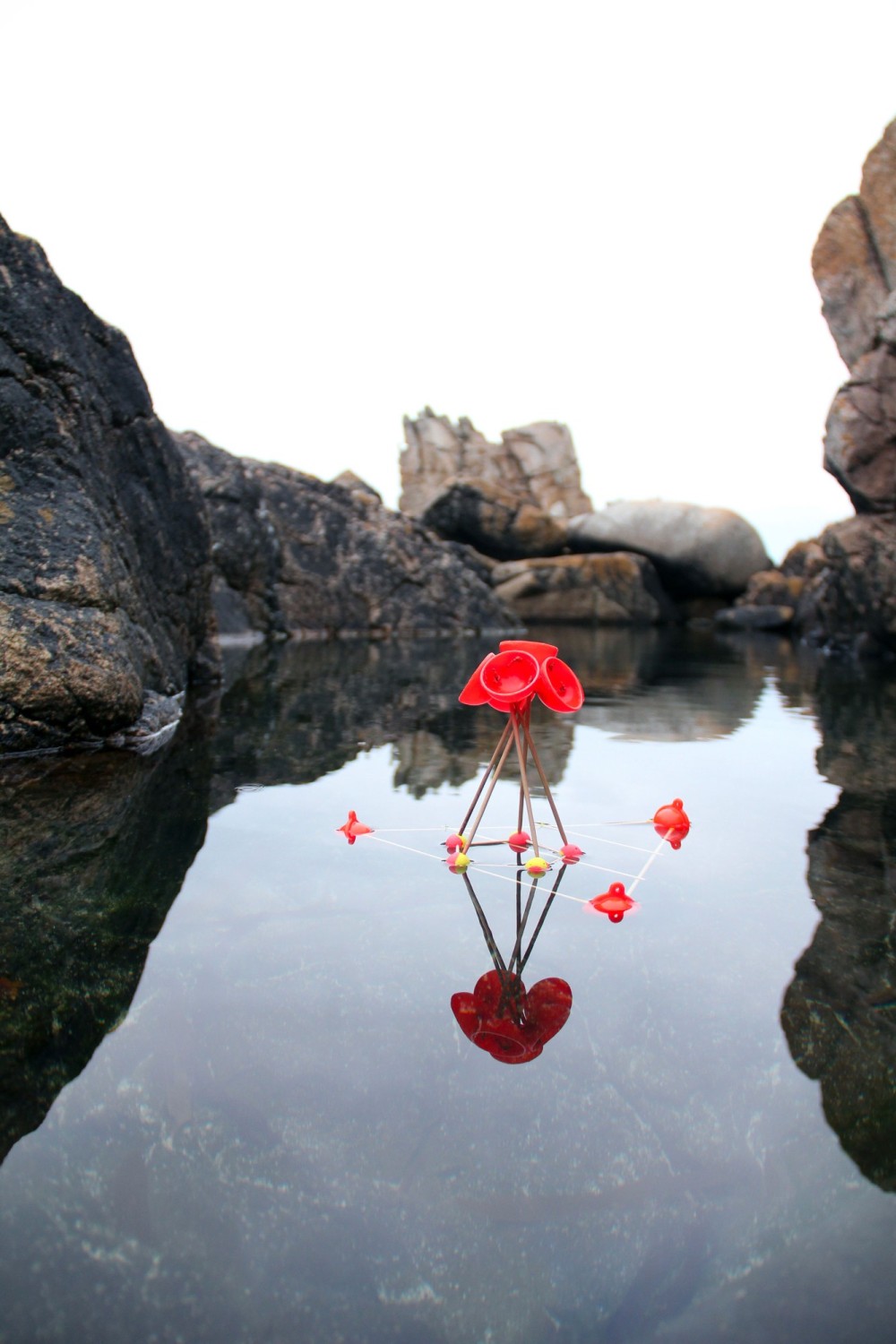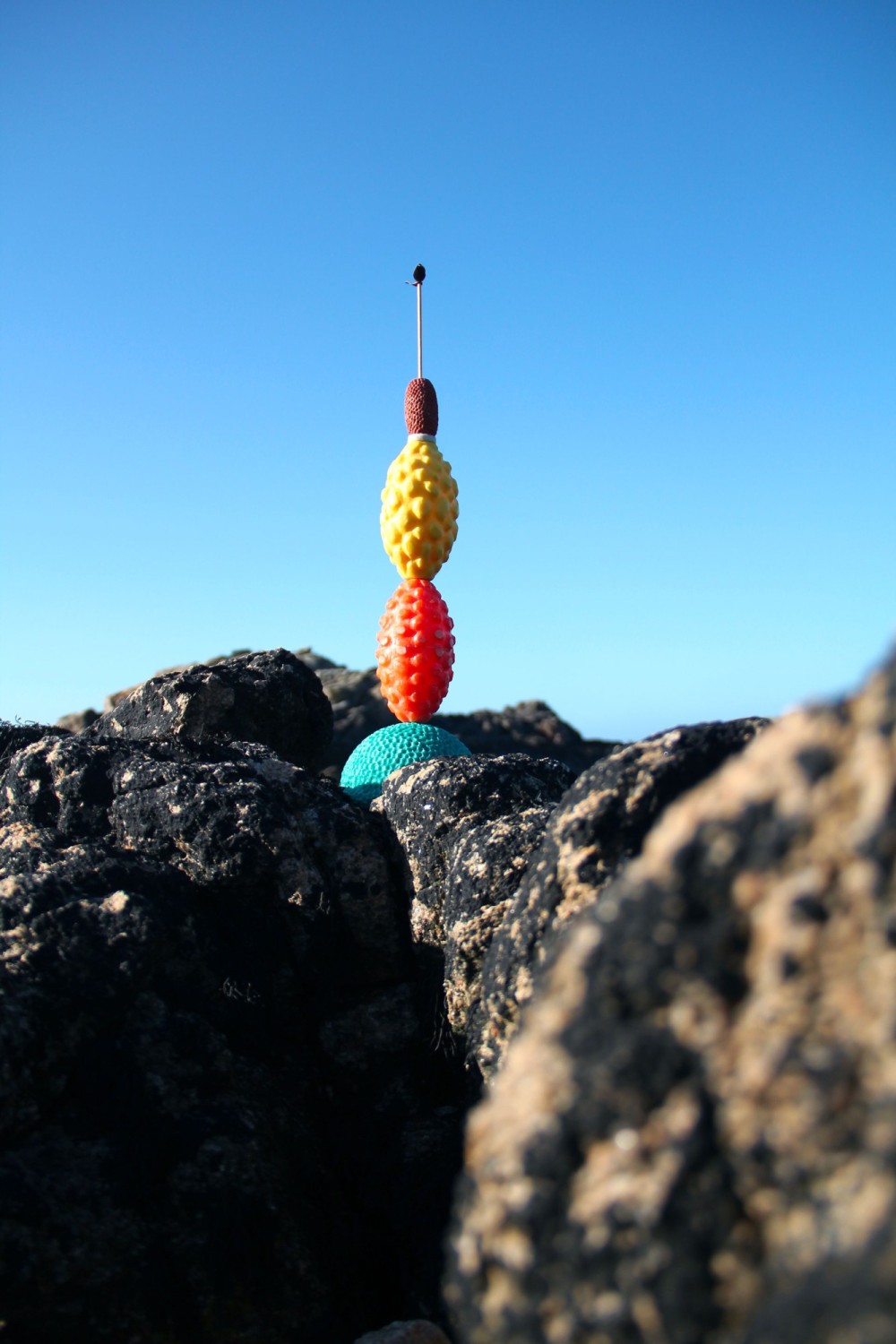Émilien Adage
Résidence sémaphore #31
A retreat residency, connected to the context of the Créac’h semaphore on Ouessant.
Ouessant












Résidence sémaphore #31
A retreat residency, connected to the context of the Créac’h semaphore on Ouessant.












The mountains look different on the island of Eusa. At low tide, this chaos of stacked blocks only measures about twenty meters, but this strange petrified jumble appears more picturesque than in the Alps. From its red and white control tower, Spartacus Paysio assesses the power of the waves. If a sortie is possible, he will transport his colorful assemblages among the rocks. The dark mineral tones are highly varied, with only a few oases of mushrooms, lichens, and seaweed dotting the landscape.
A deep rumble vibrates through the building, it’s the drumbeats of the rocks from the underground. It is said that a tunnel of caves runs through the island from end to end: the Bougué.
Spartacus is alone, traveling around his kitchen, climbing chain stairs, listening to the whistling wind, observing the rhythmic light of the Creac’h’s nocturnal sun. The indoor days sometimes feel like a Phoenix loop. Outside, he explores the cracks, turns over stones, digs the shore.
No lightning stone or bronze limpet, but gifts from providence: a polished glass cap, buoys, floats, and pieces of fluorescent plastic washed ashore by the waves. These materials, repeatedly shaped by both man and nature, are now reworked for the final time. Spartacus digs the smooth surfaces to create branched patterns and instinctively assembles the elements around him (fishing line, floats, sinkers, ropes, fishing tools, wooden sticks, trout paste…).
Small constructions emerge at the center of a nature whose scale escapes us. A boat-sail cap floats on a cavernous lake, a blue head crowned with a beacon balances among the rocky spires. An artificial fruit rises from a stream. Miniature instruments unfold on the surface of the island.
Like a cairn for mountaineers—a fixed and ambiguous structure—Spartacus Paysio’s sculptures seem to only measure the effervescence of the landscape in a specific way.
1Eunez Eusa – Ouessant Island in Breton
2«William Gilpin was one of the protagonists of the idea of the picturesque. A rigorous term that contrasts with what is smooth and introduces a range of pleasing irregularities for the eye—rough, uneven, twisted, sinuous, and three-dimensional.», in, La Série Documentaire, France Culture – Épisode 1, 2020.
3 “Rural walk in the Phoenix wood in Dordogne with Joël Cornuault”, in, La Série Documentaire, France Culture, Four experiences of returning to nature– Épisode 1, 2020.
4« Preserved by the people of Ouessant in their homes because they attributed protective powers to them, these are actually polished axes dating from the Neolithic period. », in, Ouessant, l’île sentinelle, Françoise Péron, Éditions Le Chasse-marée,1997.
5The limpet, or barnacle, is an edible mollusk found on rocky shores, with a conical rather than spiral shell. One of the most astonishing discoveries at the archaeological site of Mez Notariou was a bronze limpet, which suggests a possible cult.
6« The people of Ouessant recovered all the materials from shipwrecks. These are gifts of providence. In this way, raw materials that are absent from the island could be repurposed and used. », in, Musée des Phares et Balises, Phare du Créac’h, Ouessant, 2022.
7« Un amer est un point de repère fixe et identifiable sans ambiguïté utilisé pour la navigation maritime », in, article Wikipédia, consulted the 14 april 2022.